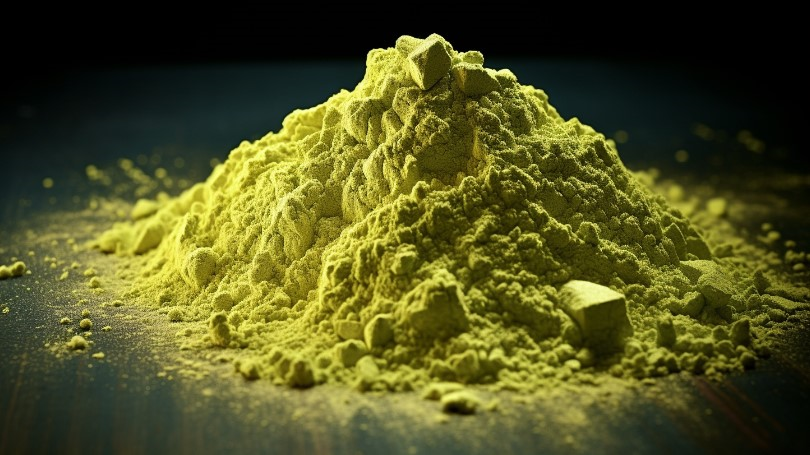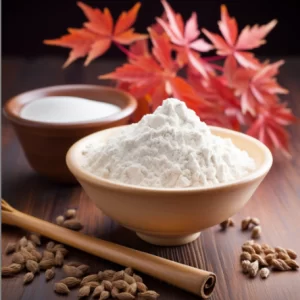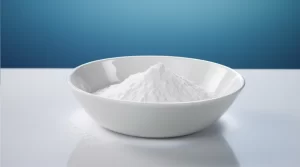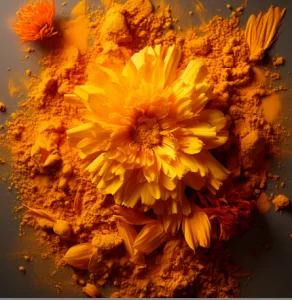상상을 뛰어넘는 케르세틴

무엇 케르세틴?
케르세틴은 채소와 과일에 널리 함유되어 있으며 다양한 생물학적 활성을 가진 바이오플라보노이드입니다. 퀘르세틴은 신체의 효소 항산화 시스템을 강화하고 항산화 및 자유 라디칼 제거 효과가 있으며 항산화 특성, 염증, 항 바이러스 및 면역 조절 효과도 있습니다. 케르세틴은 강력한 항산화 능력을 가지고 있으며 산화 스트레스로 인한 질병에 좋은 예방 효과가 있습니다.
케르세틴은 분자에 수산기가 있는 노란색 결정 또는 분말 고체입니다. 화학 구조식은 그림에 표시되어 있으며 안정적인 분자 구조를 가지고 있습니다. 케르세틴 분자는 물에 거의 녹지 않지만 차갑고 뜨거운 에탄올에는 약간 용해되며 디메틸 설폭사이드에는 완전히 용해됩니다. 또한 케르세틴은 안정성과 항산화 특성이 우수하여 의학, 식품 및 기타 분야에서 널리 사용되고 있습니다 [1].
유기체에서 산화 스트레스가 발생하면 과도하게 생성된 활성 산소 종은 많은 생물학적 분자를 손상시키고 내피 기능 장애를 일으켜 다양한 혈관 질환의 발생과 발병에 영향을 미칠 수 있습니다. 연구에 따르면 식단에서 높은 수준의 플라보노이드는 다양한 혈관 질환의 위험을 줄일 수 있으며, 그중에서도 풍부하고 활성도가 높은 케르세틴이 중요한 역할을하는 것으로 여겨집니다.
케르세틴의 강력한 항산화 특성은 다양한 질병 모델의 예방 및 치료에 중요한 응용 가능성을 가지고 있습니다. 케르세틴의 항산화 메커니즘은 일반적으로 자유 라디칼을 제거하고 금속 이온을 킬레이트화하는 능력과 밀접한 관련이 있습니다. 그러나 새로운 항산화 메커니즘에 대해서는 더 많은 연구가 필요합니다. 연구[2].
무엇 케르세틴 에서 파생되었나요?
케르세틴은 많은 식물의 줄기 껍질, 꽃, 잎, 새싹, 씨앗, 과일에서 널리 발견되며 주로 루틴, 케르세틴, 하이페로사이드 등과 같은 배당체의 형태로 존재합니다. 케르세틴은 산 가수분해 코르틴으로 얻을 수 있습니다. 그중에서도 메밀 줄기와 잎, 산자나무, 산사나무, 양파의 함량이 더 높습니다. 케르세틴은 양파, 골파, 아스파라거스, 양배추, 겨자채, 피망, 치커리, 자몽, 상추, 산사나무, 사과, 망고, 자두, 무, 검은 건포도, 감자 및 시금치와 같은 많은 식품에서도 발견됩니다. . 또한 약 100여 종의 약용 식물(고삼, 플라티클라두스 오리엔탈리스, 갈근, 머위, 로란스, 파낙스 노토진생, 은행, 엘더베리 등)에도 이 성분이 함유되어 있습니다.
차, 과일 주스, 와인에 함유된 퀘르세틴 함량에 대한 연구에 따르면 맥주, 커피, 초콜릿 우유, 화이트 와인 등 일부 음료의 퀘르세틴 함량은 1mg/L 미만인 반면 적포도주 4~16mg/L, 포도주 7~9mg/L, 과일 주스 중 퀘르세틴 함량이 높은 레몬 주스(7mg/L)와 토마토 주스(13mg/L)를 제외한 다른 주스의 함유량이 높은 것으로 나타났습니다. 일반적으로 5mg/L 이하로 낮으며, 차(10~25mg/L)의 퀘르세틴 함량이 가장 높습니다. [3]
음식을 통해 케르세틴을 섭취하고 싶다면 양파, 사과, 적포도주, 녹차 등이 좋은 선택입니다. 이러한 식품에는 퀘르세틴이 다량 함유되어 있어 건강을 유지하는 데 도움이 될 수 있습니다.
케르세틴의 추출 방법은 무엇이며 이러한 방법의 장단점은 무엇인가요? 천연 식품으로 퀘르세틴을 보충할 수 있나요? 영양 보충제가 자연 식품보다 더 좋은가요?
자연 추출 및 분리
식물에서 케르세틴의 함량은 수천 분의 1에서 수천 분의 1에 불과하고 추출 및 분리가 어렵고 비용이 많이 들기 때문에 식물에서 직접 케르세틴을 추출하는 것은 생산에 실용적이지 않습니다. 그러나 플라보노이드를 분석 및 식별하거나 분석을 위해 순수한 시료를 준비할 때는 퀘르세틴 추출 및 분리 기술을 사용해야 합니다[3].
산 가수분해
케르세틴의 루틴(루틴)은 자연계에 널리 분포되어 있으며 함량이 높습니다. 예를 들어, 고삼의 함량은 20% 이상입니다. 고삼에서 루틴을 먼저 추출한 다음 산 가수분해하여 케르세틴을 생산합니다. 이 방법은 생산이 가능합니다. [3]
루틴의 주요 추출 방법에는 알칼리 추출 및 산 침전, 유기 용매 추출 및 침지 방법이 있습니다. 그 중 알칼리 추출 및 산 침전 방법이 가장 실용적입니다. 0.05% NaOH 용액을 선택하여 20분간 끓인 후 뜨거운 상태에서 여과하고 같은 방법으로 4회 추출하여 루틴의 알칼리 수용액을 얻습니다. 산을 첨가하여 침전시킵니다. 여과 후 산을 첨가하여 가수 분해하여 불용성 케르세틴을 얻습니다. 여과하고 물로 씻고 건조하여 케르세틴 고체를 얻습니다. [3]
효소 변환 방법
루틴의 효소 가수분해는 식물에서 덜 풍부한 다량의 케르세틴 모노머를 준비하는 데 사용됩니다. 작업은 간단하고 안전합니다. 전체 프로세스는 경제적이고 실용적입니다. 생산량이 크고 산업 생산에 적합합니다. 제품의 순도는> 90%로 식품 및 임상 응용 분야의 요구를 충족시킬 수 있습니다. . 따라서 효소 전환은 의심 할 여지없이 유망한 준비 방법입니다.
케르세틴을 추출하는 방법에는 화학 합성, 식물 추출, 미생물 발효 등 여러 가지가 있습니다. 화학 합성 방법은 조작이 간단하지만 생산되는 제품의 순도가 낮고 환경 오염 문제가 있으며, 식물 추출 방법은 천연 식물에서 케르세틴을 추출하여 고효율, 안전성 및 환경 보호의 장점이 있지만 많은 양의 원료와 전문 장비가 필요하며, 미생물 발효 방법은 미생물 균주를 생산에 활용할 수있어 수율과 순도를 높일뿐만 아니라 비용도 절감 할 수 있습니다.
케르세틴은 식품에서 자연적으로 발견되는 영양소이지만 충분한 양을 섭취할 때만 효능이 있습니다. 케르세틴이 풍부한 식품으로는 석류, 사과, 건포도 등이 있습니다. 하지만 사람마다 식습관이 다르기 때문에 매일 충분한 양의 케르세틴을 섭취하기는 어렵습니다. 따라서 경우에 따라서는 자연 식품보다 영양 보충제가 신체의 케르세틴 필요량을 충족시키는 데 더 효과적일 수 있습니다.
요컨대, 케르세틴 보충제를 선택할 때는 개인의 식단 선호도, 신체 조건의 차이, 생활 방식의 다양성 등 다양한 요소를 종합적으로 고려해야 합니다. 따라서 퀘르세틴 보충제의 품질, 안전성 및 효과와 같은 측면도 고려해야 신체 건강에 긍정적인 영향을 미칠 수 있습니다.
의 효능 케르세틴
케르세틴, 케르세틴으로도 알려진 퀘르세틴은 흔히 사용되는 약재입니다. 기침과 천식 완화, 부기 및 이뇨 작용, 열 제거 및 해독, 면역력 향상 등 다양한 효능이 있습니다. 불면증과 건망증, 가슴 답답함과 숨가쁨, 두근거림, 두근거림, 몽롱함, 기억력 감퇴, 요통과 사지 쇠약, 입 마름과 입 쓴맛, 만성 기관지염 등의 증상도 완화할 수 있습니다. 또한 혈압, 혈중 지질 및 콜레스테롤을 낮추고 모세 혈관 투과성을 높이며 모세 혈관의 노폐물과 독소를 줄일 수 있습니다. 따라서 관상 동맥 심장 질환, 협심증, 심근 허혈 및 부정맥의 예방 및 치료에도 도움이됩니다.
그러나 케르세틴을 복용하면 신장 손상과 두통이나 팔다리 저림과 같은 부작용이 발생할 수 있습니다. 따라서 복용 시 의사의 조언을 따라야 합니다. 일본의 연구에 따르면 케르세틴은 음전하를 띤 염화물 이온을 세포액으로 방출하여 혈압을 낮출 수 있다고 합니다. 또한 케르세틴은 항염증 및 면역 체계 지원 효과가 있으며 항바이러스 효과가 있을 수 있습니다. 또한 호르몬 의존성 인간 전립선암 세포에 대한 안드로겐의 영향을 차단하여 전립선암 세포의 성장을 늦추거나 멈추게 합니다.
항암 측면에서 많은 연구에 따르면 케르세틴은 다양한 암세포에 대한 억제 효과가 있는 것으로 나타났습니다. 구체적인 작용 메커니즘 측면에서 퀘르세틴은 세포 증식 및 신호 전달 경로에 관여하는 암세포의 다양한 효소를 억제하는 다양한 생물학적 효과를 가지고 있습니다. 저용량 케르세틴은 암세포 특이적인 증식 억제 효과를 발휘하며, 이는 G1 단계에서 세포주기 정지에 의해 발생합니다.
케르세틴은 다양한 장기를 손상으로부터 효과적으로 보호할 수 있는 매우 중요한 항세포 사멸 및 항산화제입니다. 또한 케르세틴은 항암, 항염, 항균, 항바이러스 등 다양한 효능을 가지고 있습니다. 또한 혈당과 혈압을 낮추고 면역 기능을 조절하며 심혈관계에 좋은 보호 효과도 있습니다 [2].
[1] 야오 지안우. 케르세틴이 간 종양 세포 HepG2의 대사체에 미치는 영향에 대한 연구 [D]. 중국과학원 대학원(우한 물리학 및 수학 연구소), 2012
[2] Tian Rong. 케르세틴의 항산화 메커니즘에 대한 연구. 2021. 장시 사범 대학교, 박사 학위 논문.
[3] 정젠셴. 식물 활성 성분 개발. Beijing: 중국 경공업출판사, 2005: 167-181
[4] 바이두 백과사전. 견적



